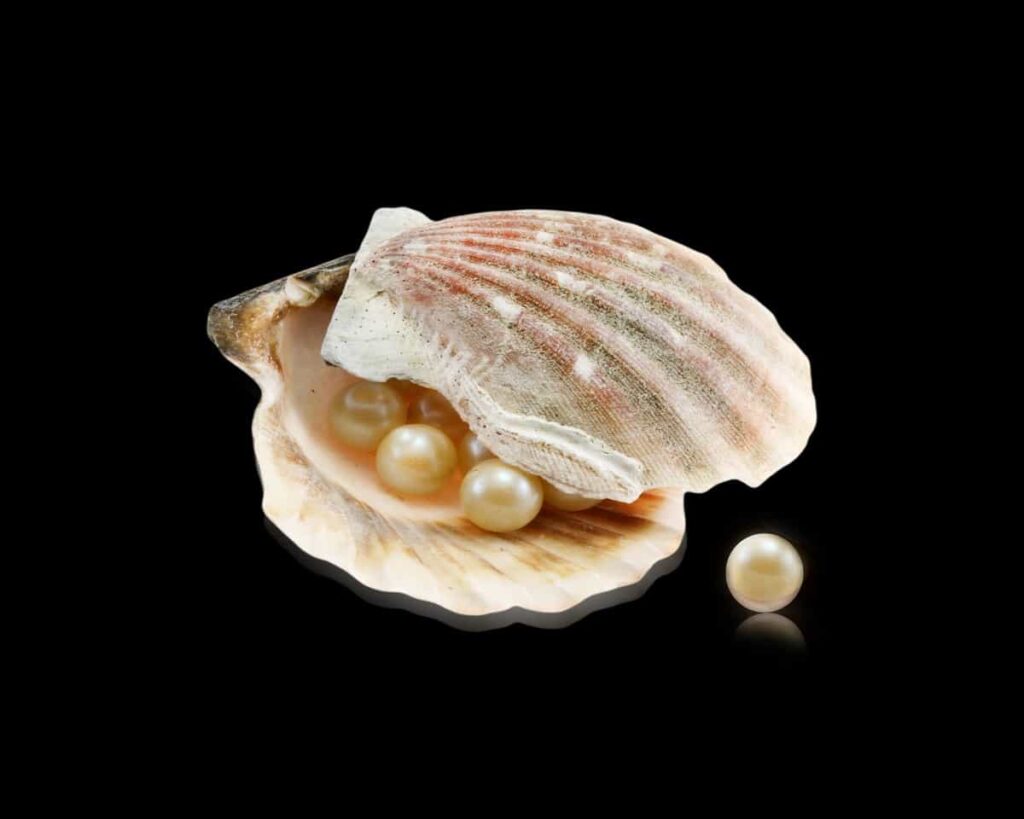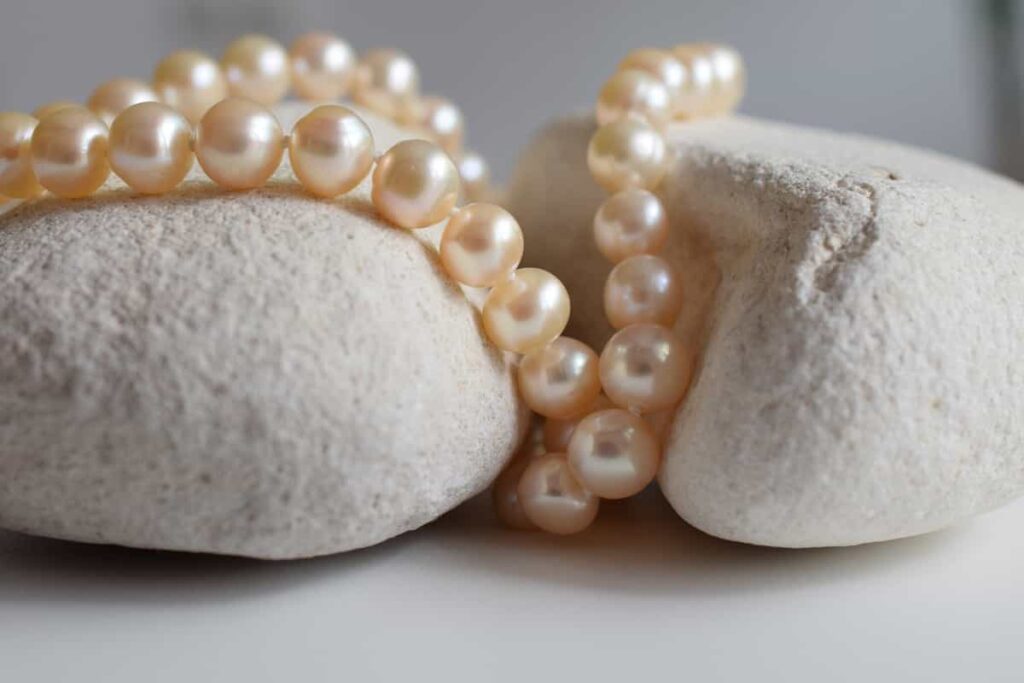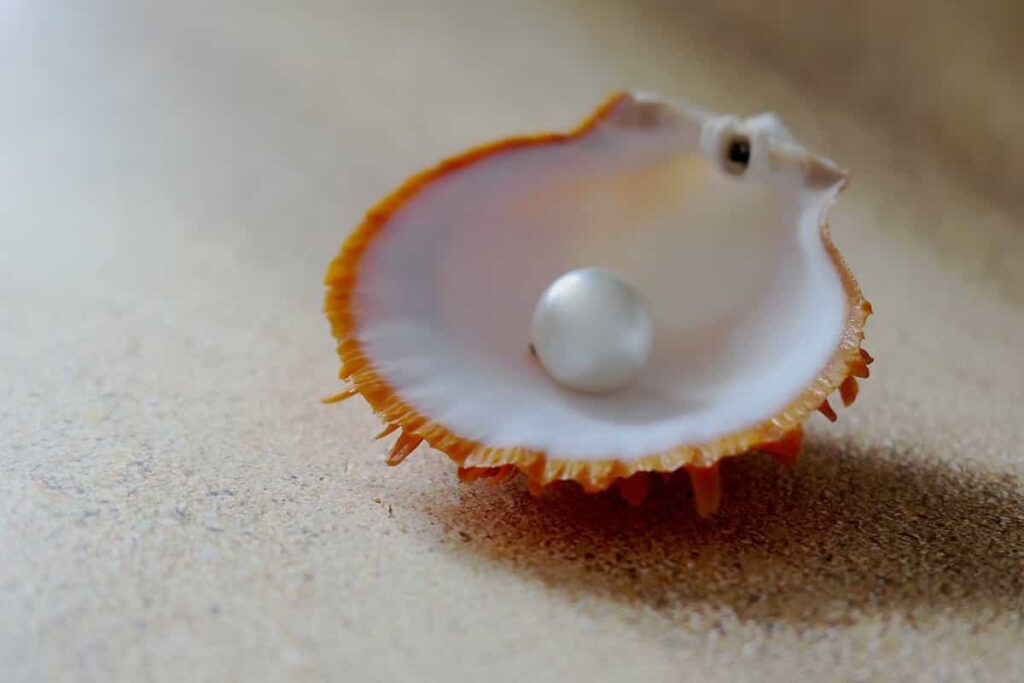The market for cultivated pearls is growing at a massive rate. As a result, India’s industry of cultivating pearls continues to grow. The finest parts of pearl cultivation are the low initial cost and a great return. Whether you’re talking about domestic or international trade, the demand for pearls is high. When combined with fish farming and other forms of commercial aquaculture, pearl farming becomes an easy and profitable business.

Here, we will learn about a pearl farmer who obtained huge profits from harvesting pearls. Below we will see the details of Mr. Ali’s pearl farm, the cultivation details in Mr. Ali’s words, and the investments and profits involved in the pearl farming business.
Earning 30 lakh rupees from the pearl farming business
Is pearl farming profitable in India?
Farmers in India generally lose money because their revenue is tied to uncontrollable weather, yet you can make much money cultivating pearls without worrying about it. The fixed assets and competent workforce only need to be invested once for productive results to be realized.
Pearl farming is a fantastic side business that requires just half an acre to three-quarters of an acre of land. After 20–24 months, proper cultivation typically yields an income of 10–12 lakhs, yielding a profit of roughly eight lakhs. Growing pearls is a lucrative business that requires nothing more than your expertise and determination to provide substantial rewards.
What are the benefits of the pearl farming business?
In commercial terms, dealing in high-quality pearls can be lucrative due to their high market value. When removed and made into a jewelry piece, its value skyrockets. Though just a small percentage of pearls mined is worth anything, the rewards, even from this small percentage, are enough to entice many individuals into the industry. Pearls are non-perishable jewels used in creating jewelry and other ornamentation; they are also lightweight.
With careful nucleation and attention to detail, you can grow pearls of superior quality and size that will last indefinitely. One of the main benefits of mussels and oysters is their capacity to purify water. A few thousand oysters can filter and purify several liters of water. People are interested in aquaculture in part because it is environmentally favorable.
In case you missed it: An Entrepreneur Earning 24 Lakhs from Cloud Kitchen: A Success Story of a Woman in India

Many people throughout the world, including farmers and experts, consider pearl farming to be the most sustainable method now in use. Over 250,000 oysters may be cultivated in a very small pond or water body, and the initial investment and resources needed are rather simple. After securing trustworthy input, the technique is simple, but it takes time and involves significant danger.
What are the disadvantages of the pearl farming business?
The unlimited availability of oysters and skilled grafting specialists is essential to the successful operation of a pearl farm. These are the minimum necessities, after which the laborious and time-consuming task of planting seeds may begin. As was previously said, this business’s starting capital needs are modest yet essential. However, due to the lengthy time frame required for yielding profits, an initial investment of 2-3 years is required, with no returns expected during the first or second years.
Selling and buying pearls requires a well-established market, which may require more work for producers to establish. So, with the necessary number of pearls extracted, the appropriate study is essential before beginning this business. The long-term worth of pearls can be jeopardized if too many are harvested at once. More than half of the organisms die during seeding, and many gems produced are subpar.
Due to the unrealistic nature of the manufacturing, there is a significant amount of danger connected with this venture, and as such, careful preparation is essential. To get natural pearls, one must dive into the depths of oceans and seas if they do not possess a farm. The method used to grow cultured pearls is complex. Most pearls sold today are imitations. Hence the nucleation method is essential to producing genuine cultivated pearls. Natural pearls are difficult to come by since only a small number of pearls are produced from thousands of shells.
In case you missed it: Earning 30 Lakhs from Coco Coir and Coco Peat Making: A Small Business Success Story in India

How do I start a pearl farming business?
There is a wealth of knowledge at your fingertips thanks to the internet, and with the advancement of technology, launching a brand new company couldn’t be easier. A similar circumstance applies to the pearl farming business. After completing those above, you will be ready to launch your business into full swing. But before you do that, you need to get some instruction from a reputable government organization like CIFA (Central Institute of Freshwater Aquaculture).
If you want to establish a small company from home, you’ll need nothing more complicated than two fish tanks. It is recommended to stack these containers so that water may be recycled from one to the next. A hole drilled into the top tank will allow water to flow freely. The next step is to install a single air pump, venturi pump, and water pump that control the water flow and keeps the tank at an optimal temperature for oyster growth.
Once the above has been set up, it needs to be run for a few hours in the morning and evening every day. Approximately fifty mussels may be kept in a tank three feet in length, two and a half feet in breadth, and one and a half feet in depth. It’s important to feed the mussels just the best algae possible. Pearl quality is greatly affected by the availability of vitamin and mineral supplements. Thus they should be given. The typical cost of pearl cultivation is around 20,000 to 25,000 per year.
How much profit can be obtained by the pearl farming business?
You can buy a single oyster from the market for about 20 to 30 rupees, but selling an oyster pearl can get you anywhere from 300 to 1,500, depending on its quality. Although the potential for a large payoff is obvious, this venture will test your perseverance and persistence. Remember that you can get started on a small scale with little money, but that rapid growth will need a much larger financial and time commitment over many years.
In case you missed it: Earning 7 Lakhs from Gym Business: An Entrepreneur Success Story in India

Obtaining spat, raising them by feeding until grafting size, grafting, and cultivating until the first harvest is all required processes in the pearl farming process. Although seemingly simple, this is a time-consuming practice. It takes four to five years to see consistent profits from a newly established pearl farm. If we do this on a huge scale, we won’t make back your initial investment with the proceeds from the first crop.
The success story of Mr. Ali
Mr. Ali is from the Warangal district, Telangana. In the past, he used to work in Saudi Arabia as a construction supervisor. When he was in Saudi, he learned about pearl farming, through his fellow employee, at the time of his last days in that country. When he returned to India, he started fish farming and wanted to try pearl farming too. But he thought it might be risky as it was his first time starting pearl farming.
He decided to start small. First, he learned about the buyers in the market and learned about the prices. He then made a deal with a few buyers. After thorough thinking, he started his pearl farming business, and after his first batch, the results were amazing. He earned huge profits with very less risk. Below we will see Mr. Ali’s experiences in starting his pearl farming business, cultivation details of pearls, investments, and profits involved in the pearl farming business.
Why Mr. Ali chose pearl farming?
When asked this question, Mr. Ali replied that the pearl farming business involves very less management and minimal risk. The investment is also very less when compared to the profits. The only disadvantage is that the oyster’s cultivation period for each batch is nearly 18 months. If this is not a problem for anyone, they can start pearl farming easily. This is the reason why Mr. Ali chose the pearl farming business.
Pearl farming cultivation details, according to Mr. Ali.
In contrast to the costly metals and jewels used to craft most jewelry, Pearls are discovered within a living creature—the oyster. Oysters produce pearls as a natural defense mechanism against environmental contaminants. A pearl is formed when an oyster accepts an outside material between its mantle and shell. The oyster will produce a nacre to coat the irritating object as a defense mechanism.
The accumulation of several such layers forms a pearl. This is how the pearls are formed in the oceans and rivers. When it comes to pearl farming, we insert two nuclei in each oyster, which will later be turned into pearls. Instead of natural contaminants in the ocean, a nucleus is used as a contaminant in pearl farming. In this way, the nacre gets coated on the nuclei in different layers, which within 18 months, will turn into a pearl. This is the process of artificial pearl farming, says Mr. Ali.
Mr. Ali imported his oysters from Maharashtra state. He bought nearly 20,000 oysters at rupees 22 per each. You have to be very careful while transporting these oysters, says Mr. Ali. If you don’t take the necessary precautions, these oysters might die during transportation. Transportation should be done as quickly as possible. It took him nearly 4,60,000 rupees, including transportation, says Mr. Ali. Mr. Ali cultivates his oysters in 12 * 12 * 5 size tanks. These tanks have a capacity of 17,000 liters.
In case you missed it: Earning 27 Lakhs from Edible Biscuit Tea Cup Making Business: The Success Story of a Woman Entrepreneur in India

Each tank can hold nearly 5,000 oysters, says Mr. Ali. You will need 3 liters of water for each oyster. Fill your tanks with oysters based on these calculated parameters. Mr. Ali says that he provides spirulina as a food for these oysters. Spirulina is a highly nutritious food made of algae. These are widely available in online and offline markets. Spirulina is also costly; 1 kg of spirulina costs nearly 500 to 600 rupees, says Mr. Ali. But here is the actual twist. You must add only 30 grams of spirulina per two days per 1000 oysters.
This is very minimal. One of the most crucial components of pearl farming is Ammonia testing. For pearl cultivation, ammonia should not be very high. Each time the oysters excrete, the ammonia percentage in the water increases. For every 4 to 5 days, you must test ammonia in the water and change the water if the ammonia exceeds a particular limit, says Mr. Ali. You also have to ensure that the water temperature is not very high, says Mr. Ali.
Investment and profit analysis of Mr. Ali’s pearl farm
From his 20,000 oysters, say that only 12,000 made it till the end of 18 months, then from each oyster, we can get nearly two pearls, says Mr. Ali. These pearls are graded into three types, 1st grade, 2nd grade, and 3rd grade. Say that if you can produce the third-grade pearls from your farm, which is the least quality grade, then for each pearl, you’d get a minimum of 150 rupees, says Mr. Ali. From each oyster, you will get two pearls; for 12,000 oysters, Mr. Ali will get a minimum of 24,000 pearls (on average).
In case you missed it: Profitable Food Franchise in India Under 10 Lakhs: Low Investment, and High Profits

This means that the minimum income for each batch of 18 months containing 12,000 oysters is nearly 36,00,000 rupees. Now, if we look at investments when taking the one-time and running costs, including labor costs, the investment is nearly 6,00,000 rupees. If we take off this investment from his income, his net profit after 18 months is nearly 30,00,000 rupees. This is a huge profit for such a small investment.
In this way, Mr. Ali says that he earned huge profits from the pearl farming business. He is now very happy that he started his pearl farming business and wants to expand his pearl farm. He also coaches people who want to get into pearl farming by charging a minimal fee of 2,000 rupees. He says that he wants farmers to get into such businesses as these involve less risk, less management, and huge profit.
- Handicraft Making at Home: A Small Profitable Business Idea
- Pet-Tech Startups: Innovations for Animal Lovers
- Tech Repair Services: Meeting the Demand for Gadget Maintenance
- Maximizing Rewards: Smart Credit Card Habits for Cashback and Points
- Ultimate Guide to Making Money from Goat Milk Business
- How to Start an Agricultural Value Added Product Business
- Value-Added Business Ideas for Greenhouse: The Best Ways to Make Profits with Greenhouse Farming
- How to Make Profits with Organic Country Chicken: Best Strategies for Beginners
- 10 Value-added Business Ideas for Millets: Low-investment and Highly Profitable
- Why Cleaning Service Business Becoming More Profitable in Metro Cities in India
- 10 Best Businesses to Start in Ayodhya for Profits
- Top Drone Business Ideas in India: Unlocking Aerial Innovation & Opportunities
- Top 10 Service Businesses You Can Start with No Money
- Ultimate Guide to Starting a Home-Based Advertising Agency Business
- Starting a Nail Salon Near Your Location: Check List, Business Plan, Licensing, and Opening Instructions
- Construction Company Name Ideas: Guide to Create New Construction Company Names
- 8 Best Small Businesses to Start in Hyderabad: Low-Cost and Profitable
- 10 Best Small Businesses to Start in Massachusetts: Low-Cost and Profitable
- 10 Best Small Businesses to Start in Maryland: Low-Investment and Profitable
- 10 Best Small Businesses to Start in Delaware: Low-Investment and Profitable
- 10 Best Small Businesses to Start in Connecticut: Low-Investment and Profitable
- Top 10 Best Online Pet Business Ideas: Exploring Cats to Dogs
- 10 Best Small Businesses to Start in Colorado: Low-Investment and Profitable
- Top 10 Profitable Small Business Ideas in California: Low-Investment Tips
- From Little Rock to Fayetteville: Top 10 Profitable Small Business Ideas in Arkansas
- Top 10 Profitable Small Business Ideas in Alabama: Discover Opportunities in Alabama’s Growing Cities
- Top 10 Profitable Small Business Ideas in Arizona: Discover Opportunities in Arizona’s Growing Cities
- Golf Business Ideas: Exploring Golf Course Money Making Ideas
- Low Capital Profitable Small Farm Ideas: Farming Ideas to Make Money
- How to Write a Business Plan for Daycare: Exploring from Financial Projections to Risk Management
- Home Daycare License Requirements: Exploring State-wise In-home Daycare Requirements
- How Profitable is Day Care Business: How Much Does a Daycare Owner Make a Month or Year?
- How to Open a Daycare Center in Toronto, Canada: Business Plan, Licenses and Permits
- How to Start Meal Prep and Delivery Services: A Popular Business Idea
- How to Start a Milk Chilling Plant Business
- How to Start Coconut Shell Charcoal Business: Business Plan for Maximizing Profits